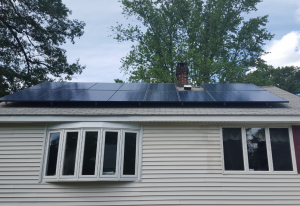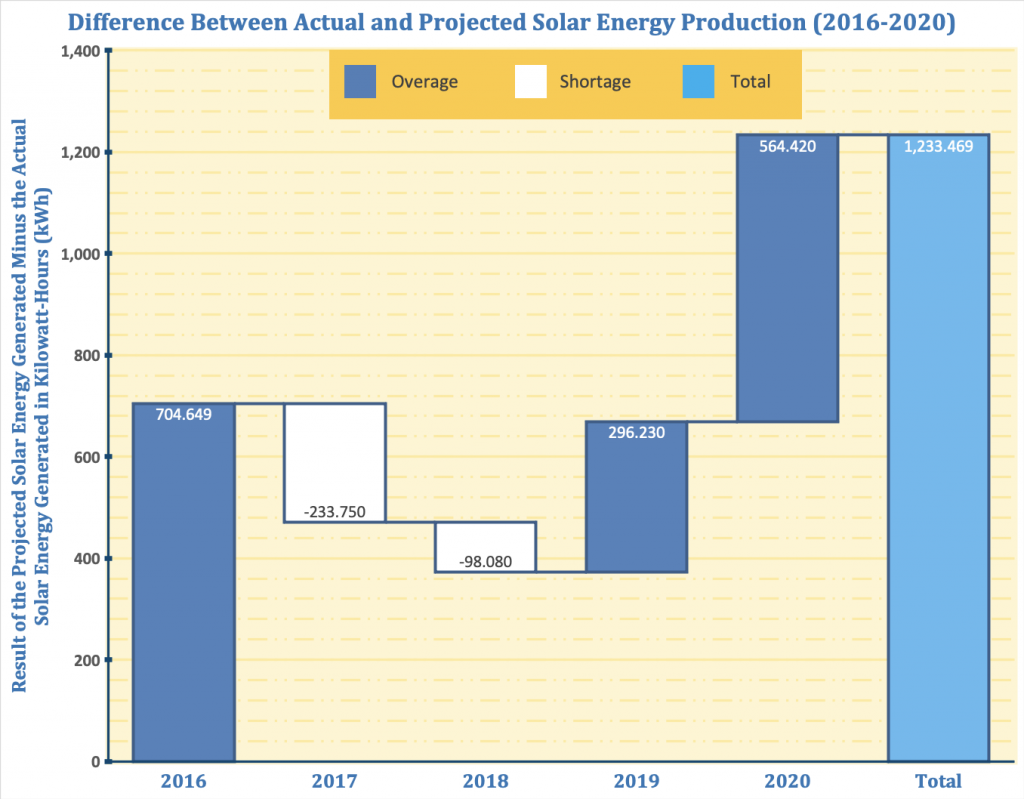Solar Success: Splendid Surprises and Significant Savings
Kay Richard of Tewksbury, MA: Solar Electric
“If I knew how, I would dance an Irish jig on my roof wearing neon lights so that everybody could understand how much we love our solar!”
Believe it or not, the above quote came from one of our more hesitant customers. Kay Richards and her husband had an interest in solar for a while, but did not venture into the world of solar energy until 2015. The realization that prompted their venture is all too common: they were paying too much for electricity and wanted to look into the cost of a solar panel. They realized as well that their utility rates would only increase over time. Alternative energy, they decided, was the best remedy for their bloated electrical bills. Plus, it would help them reduce their carbon footprint, which was a longtime concern of theirs.
Of course, they were not about to let just any company install solar panels on their house. “The hype of solar was very new and very hot around the time we started shopping around. We did not want some fly-by-night company based across the country. It was important to us to have a local company who would be reachable and stand by their product,” said Kay, “I was concerned that the overall cost of a solar panel would not be reduced as much as quoted, or that the system may fail prematurely because the technology was so new.”
Fortunately, we addressed all her concerns and exceeded her expectations.
“We could not have asked for a better experience,” Kay reports, “From the initial informational visit, to the installation, and throughout any technical issues we have encountered since, NE Clean Energy and their complete staff have been a fountain of information and professionalism.”
Her cost of a solar panel was well compensated for too.
After five years, she has a solar energy system that shows no signs of slowing down. The cost of a solar panel for her was an upfront payment of $1,000, plus a loan of $11,000 to pay for the installation cost of solar panels. Besides that, however, the starting cost of the solar panels were covered with state and federal tax benefits for and energy credit earnings from going solar. By the same means, she eventually paid off the initial deposit and loan too. Kay remarks, “Our solar has been more reliable than expected or even quoted. As efficient as we try to be (I still enjoy hanging my clothes to dry), our consumption has absolutely gone up by about 10% in the past 18 months. With somebody always home, there are more lights, electronics, and other resources being used. Since I don’t receive any kind of reimbursement for this added cost from my employer, I am grateful that it hasn’t actually cost us anything in monthly bills.”
Her solar energy system also provided her family with a benefit that she can’t put a price tag on.
“Having solar has made our family more aware of the resources we use,” she says, “Despite having ‘endless free’ electricity, we strive to be ever more energy efficient so that we can get the most out of our system.”
When asked about what aspect of our service she appreciated the most, she replied, “I was most impressed by how quickly the install team worked during a super hot week in August. They were very polite and unobtrusive, all the while cleaning up every bit of mess along the way. NE Clean Energy even checked our roof for support issues and did the repairs needed as part of the install.”
“We had a newly shingled roof,” she continued, “but our 1938 home had old rafters that were too spaced out to support the weight of the panels. NE Clean Energy was able to assess and correct this problem. I imagine the small fee they charged for this service was far less than if we had to get a whole construction crew out to handle it.”
This was far from the only issue we were able to resolve for Kay.
“Additionally,” she says, “living in a small town, the permit process here is a nightmare. NE Clean Energy handled everything from permitting, digging a trench (for solar out to the garage), installation, and cleanup. I love that they ensure that the system is as attractive as possible. After years of use, we can say that they are set the perfect distance off of the roof so that leaves and debris fall right under, but nothing ever gets caught under the panels. We had no additional conduit or hardware runs along the outside of the house depreciating our curb appeal, and the inverter takes up minimal space in the corner of our basement. The installers were clearly skilled at their task and never frustrated as I bugged them the whole time with questions.”
And in terms of reducing her electricity bill?
“Our system went live in August of 2015 and we haven’t had a bill at all since October 2015. We are charged a monthly customer fee by National Grid (as we are still tied on to the system), and a very small bill in the winter months. However, we create so much excess, that we have a rolling credit, and that pays what little fees we are charged. Our net metered amount has become so high, that we are able to gift several hundred dollars in National Grid credit to our friends and neighbors,” she reports. In other words, for the one-time cost of solar panels, she and her family generate almost all the electricity they need at home. Thus, they avoid paying a premium for electricity from outside sources. Kay and her family can then pass on the savings to other people. This shows how even one house’s solar energy can reduce financial stress in a community.Indeed, as shown by the chart and table below, three out of five years of solar production had overages.
An overage means that the solar energy system exceeded the projected production of energy for that year. Also, the overages dwarfed all shortages, resulting in 1,233.469 kilowatt-hours (kWh) worth of excess energy production for the years of 2016 to 2020 (see side panel above for an overview of how energy output units work!).
| 2016 | 2017 | 2018 | 2019 | 2020 | Total | |
| Actual (kWh) | 8,765.649 | 7,755.250 | 7,818.920 | 8,142.230 | 8,339.420 | 40,821.469 |
| Projected (kWh) | 8,061.000 | 7,989.000 | 7,917.000 | 7,846.000 | 7,775.000 | 39,588.000 |
| Differences (kWh) | 704.649 | -233.750 | -98.080 | 296.230 | 564.420 | 1,233.469 |
Solar has not just allowed Kay to build up credits in excess energy production.
Through the Solar Renewable Energy Certification (SREC) program, she earns solar credits for each megawatt of electricity her panels generated. Local electric companies can then buy those credits to meet their requirements for solar energy production in the area. Although the precise dollar value of solar credits varies greatly based on market supply and demand, Kay reported that she has earned hundreds of dollars worth of the credits, which is well above and beyond the initial cost of her solar panels. Overall, the value of solar credits has trended upwards for her over the last five years.
Do note, however, that Kay’s home state of Massachusetts ended the SREC program. This is of no concern to her, as she went solar in 2015 and so still receives SREC credits. Yet, for the rest of us, every month that we are not generating solar energy is a month when we do not receive the solar incentives still available to us. Unfortunately, the amount of incentives the state provides will decrease. As our own Mark Durrenberger remarked back in 2017, the optimistic view is that solar incentives decrease over time by design (to reflect increasing quantities of adopters). Yet the cynical view is that non-solar electricity providers are pressuring regulators to slow the expansion of solar as it becomes increasingly competitive with the fossil-fueled utility monopoly. This is why it is important that people who want to invest in solar do it as soon as possible. Otherwise, they will not be able to reap the maximum benefits possible within the system.
It literally pays you the cost of a solar panel to not delay.
As Kay says, “Do it NOW. Every day you wait is one day more you are overpaying for electricity. The companies are there to make money and nothing else. Take your bills into your own hands.”


